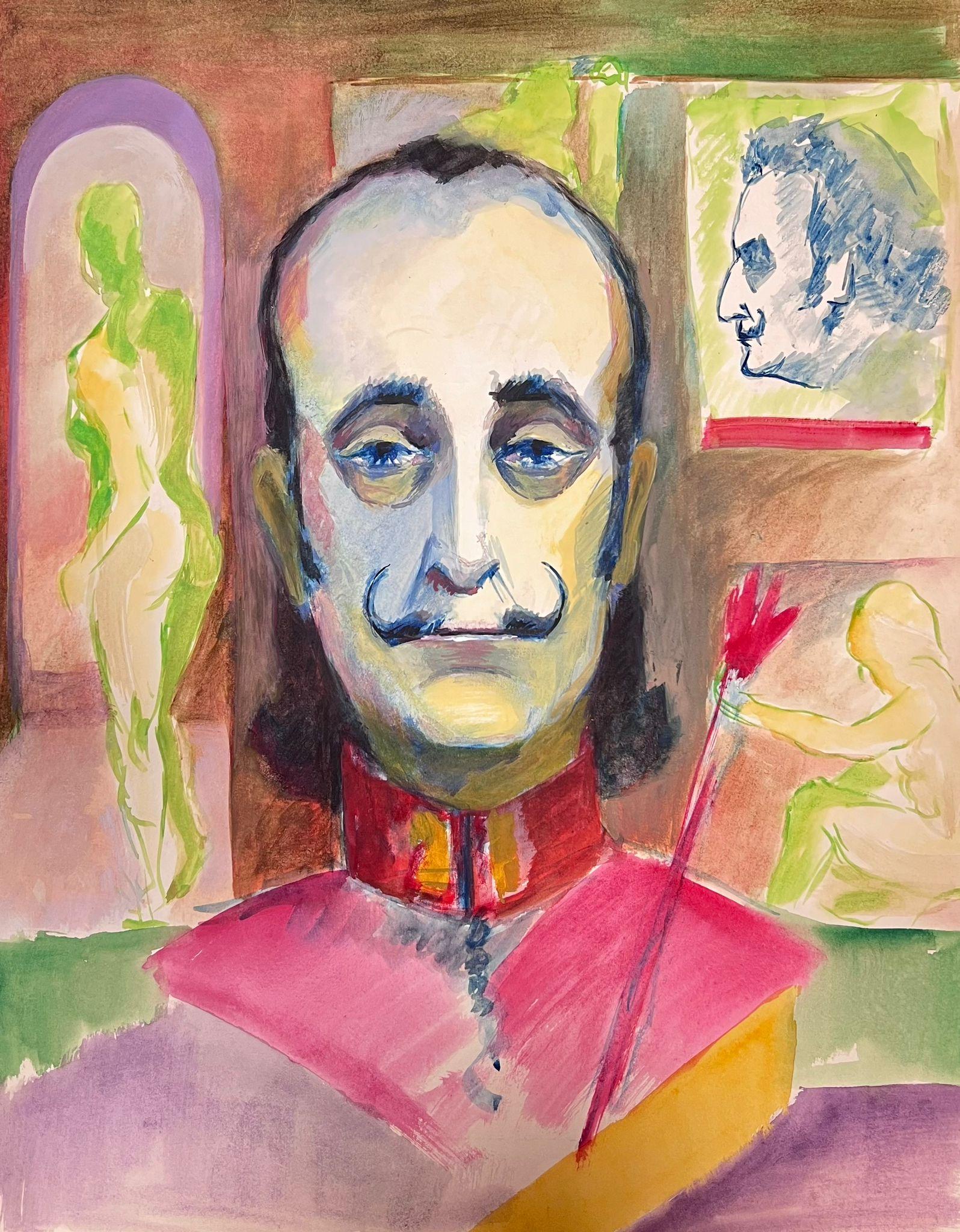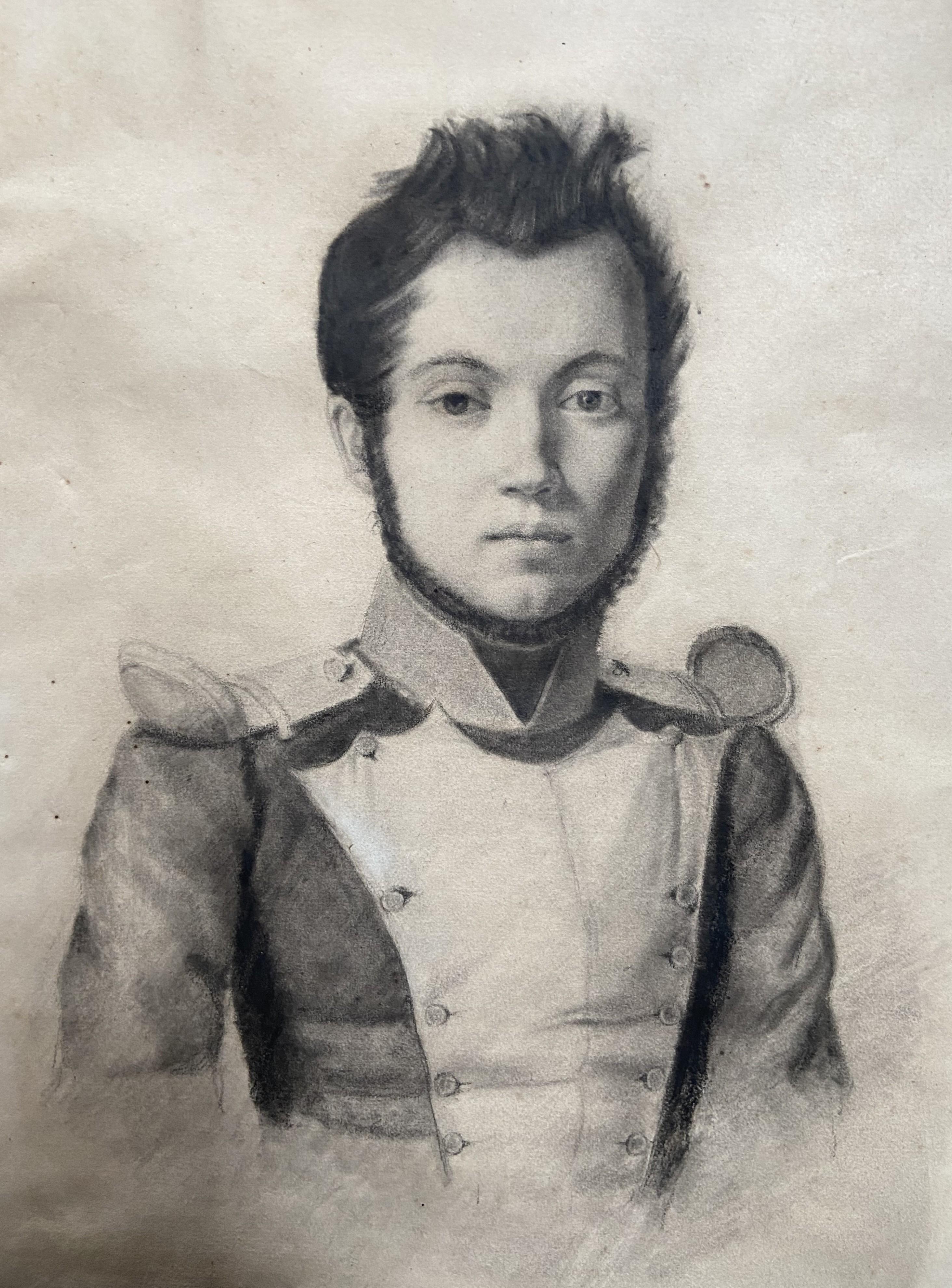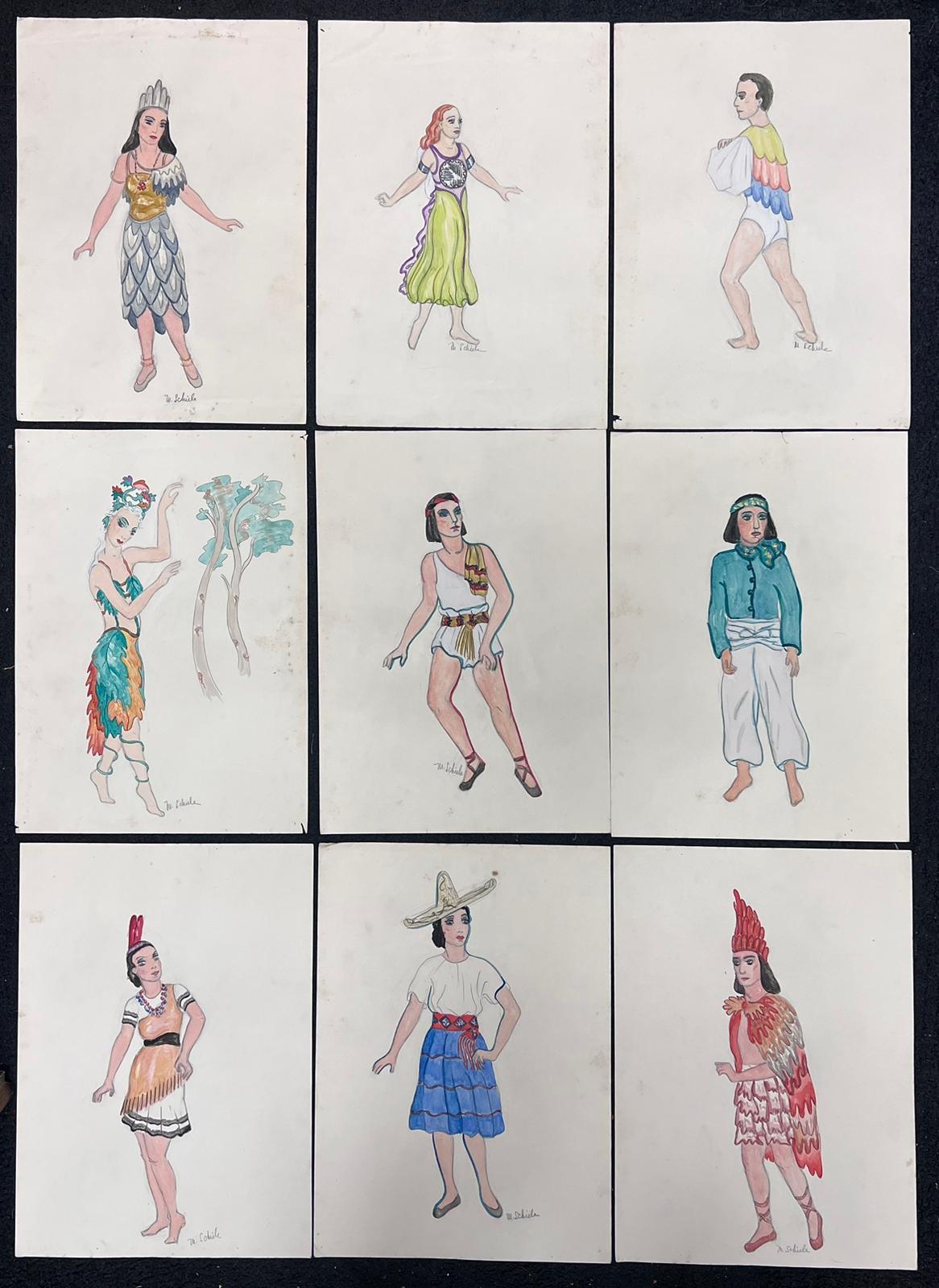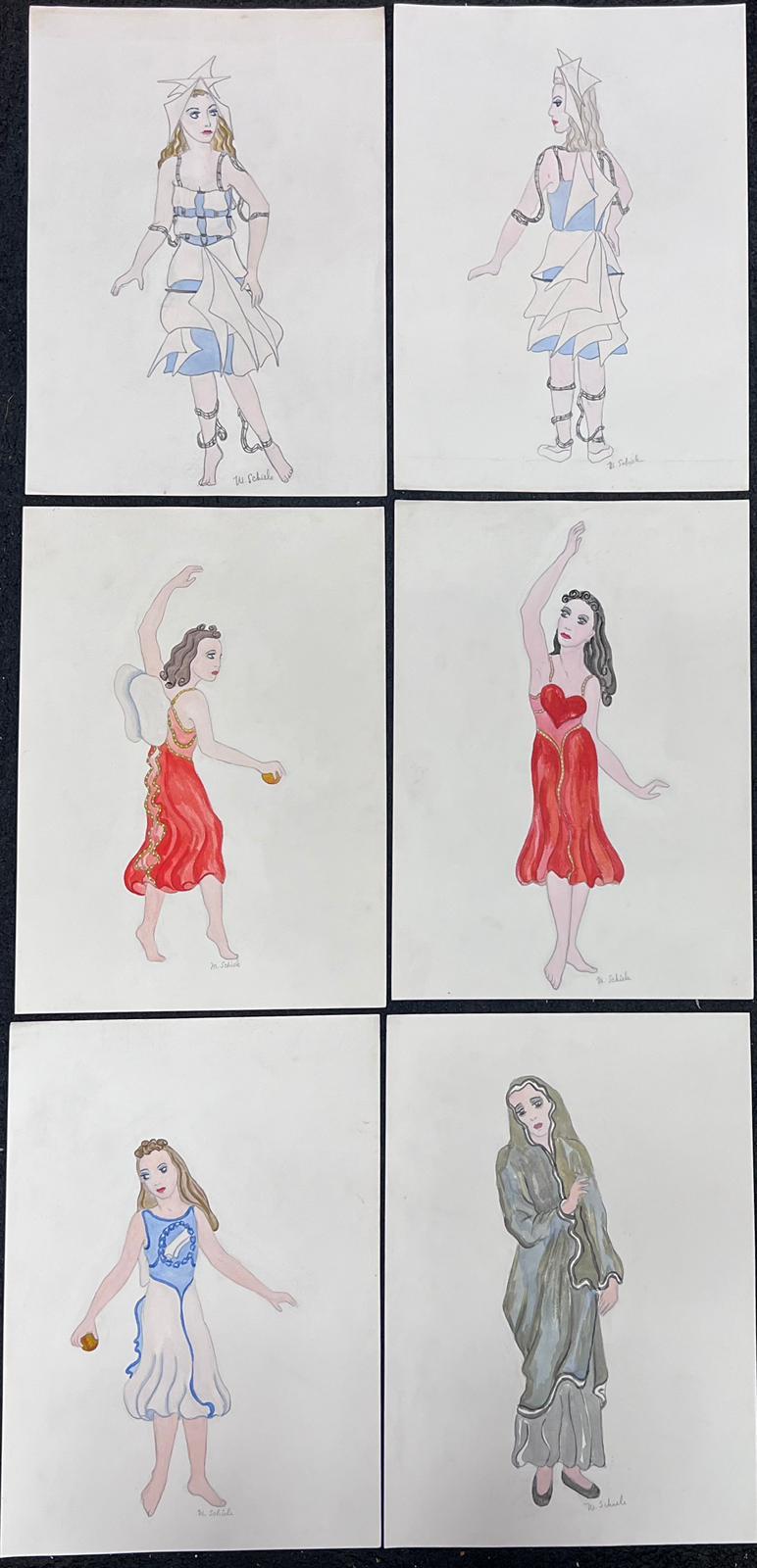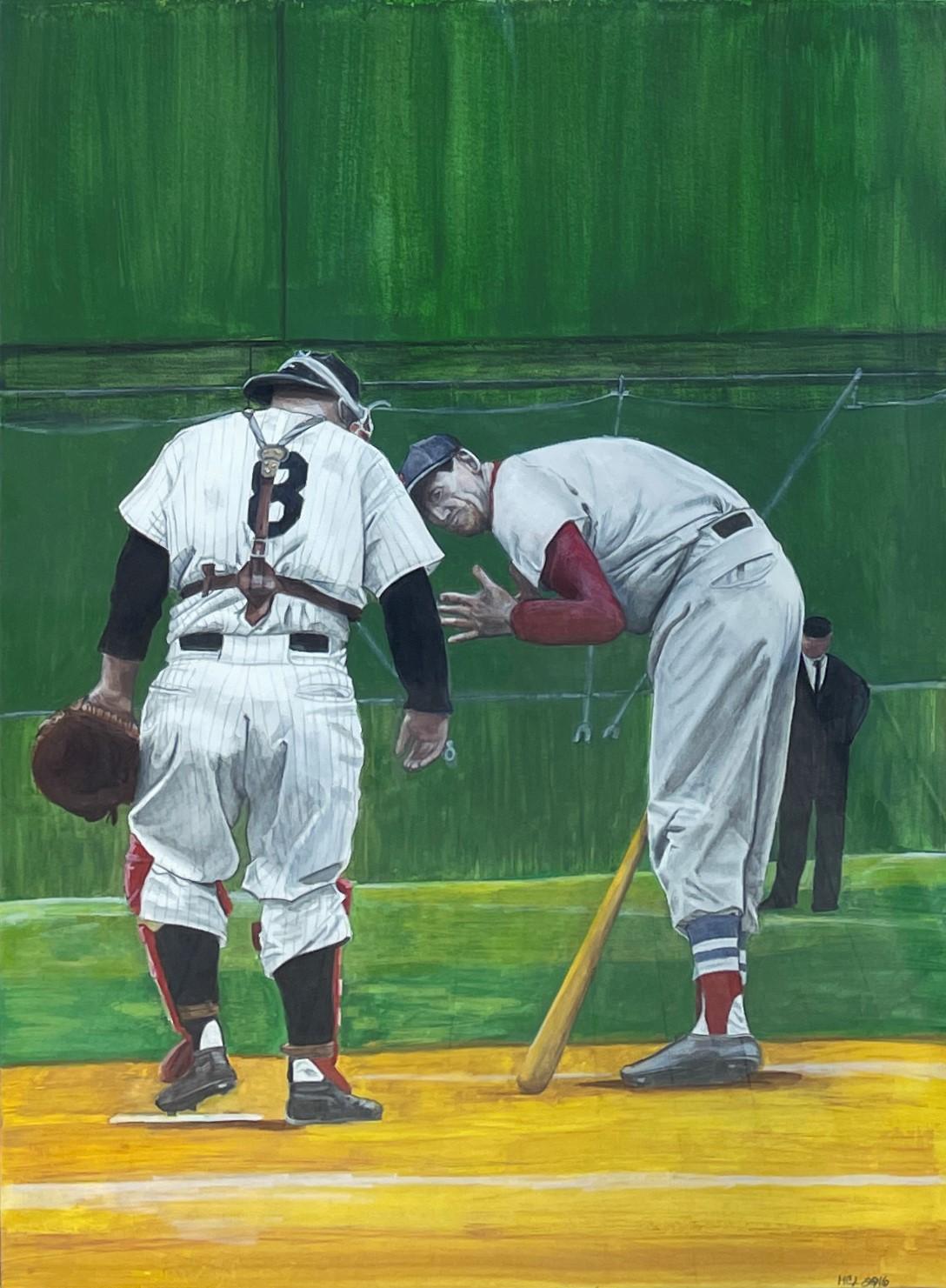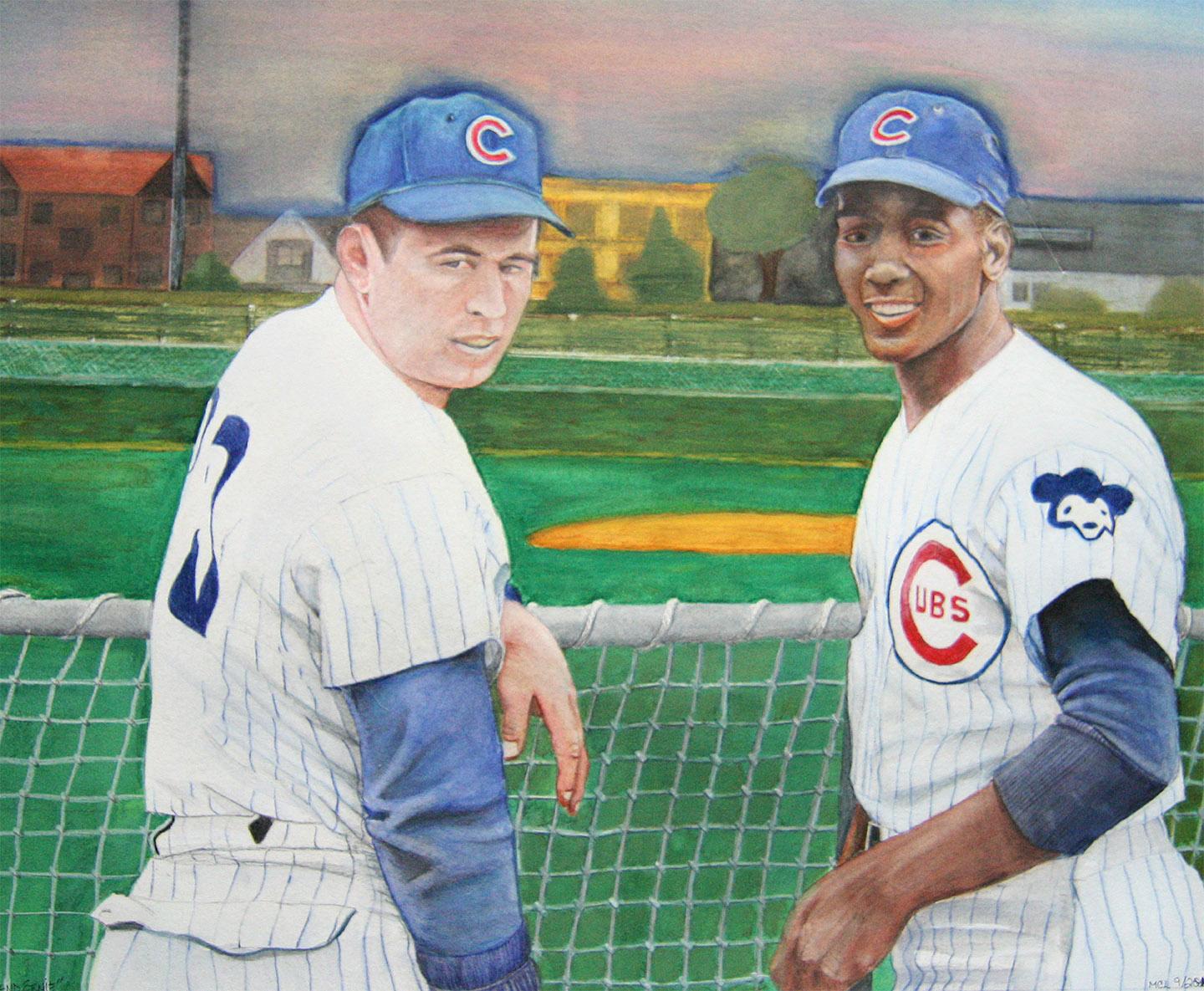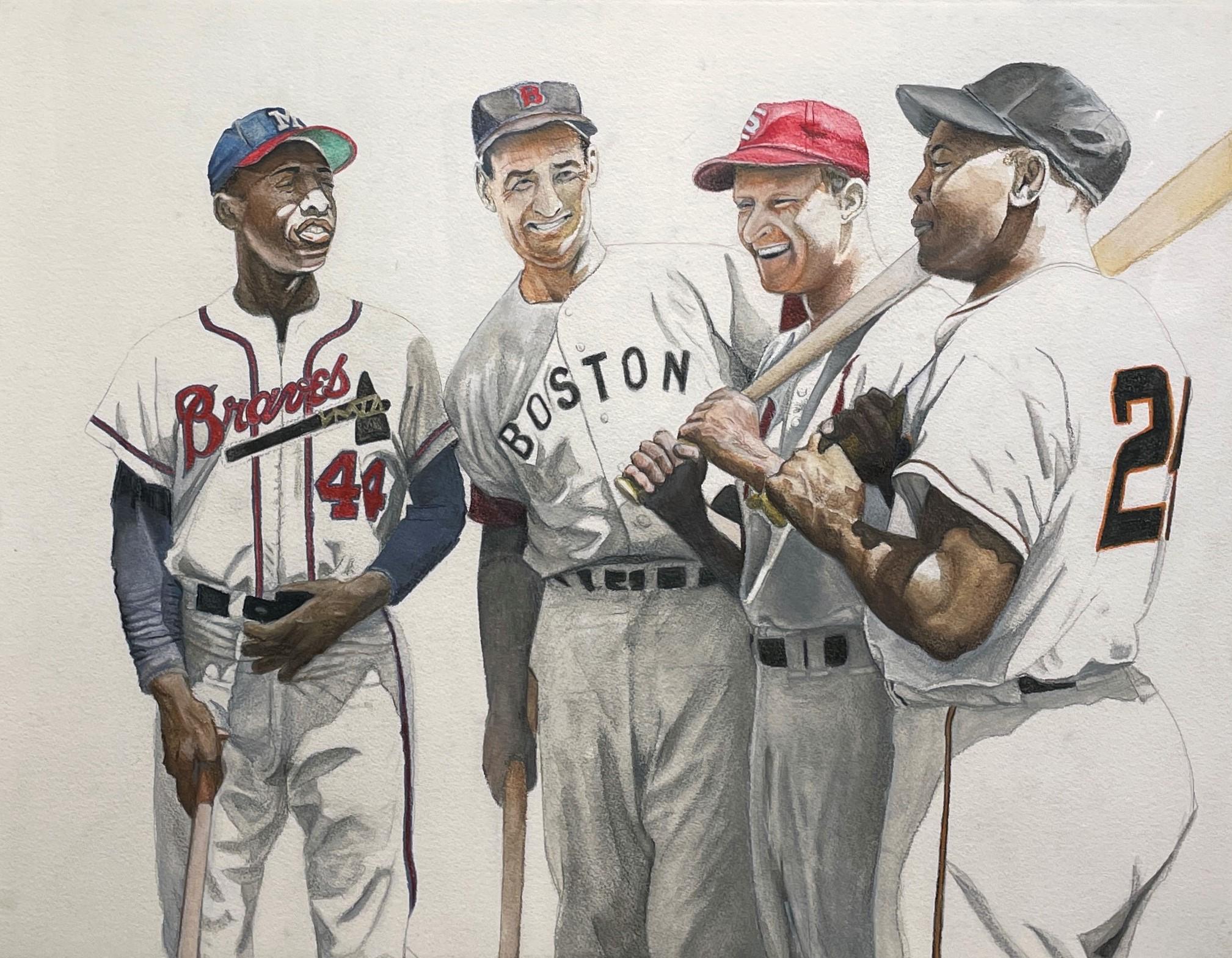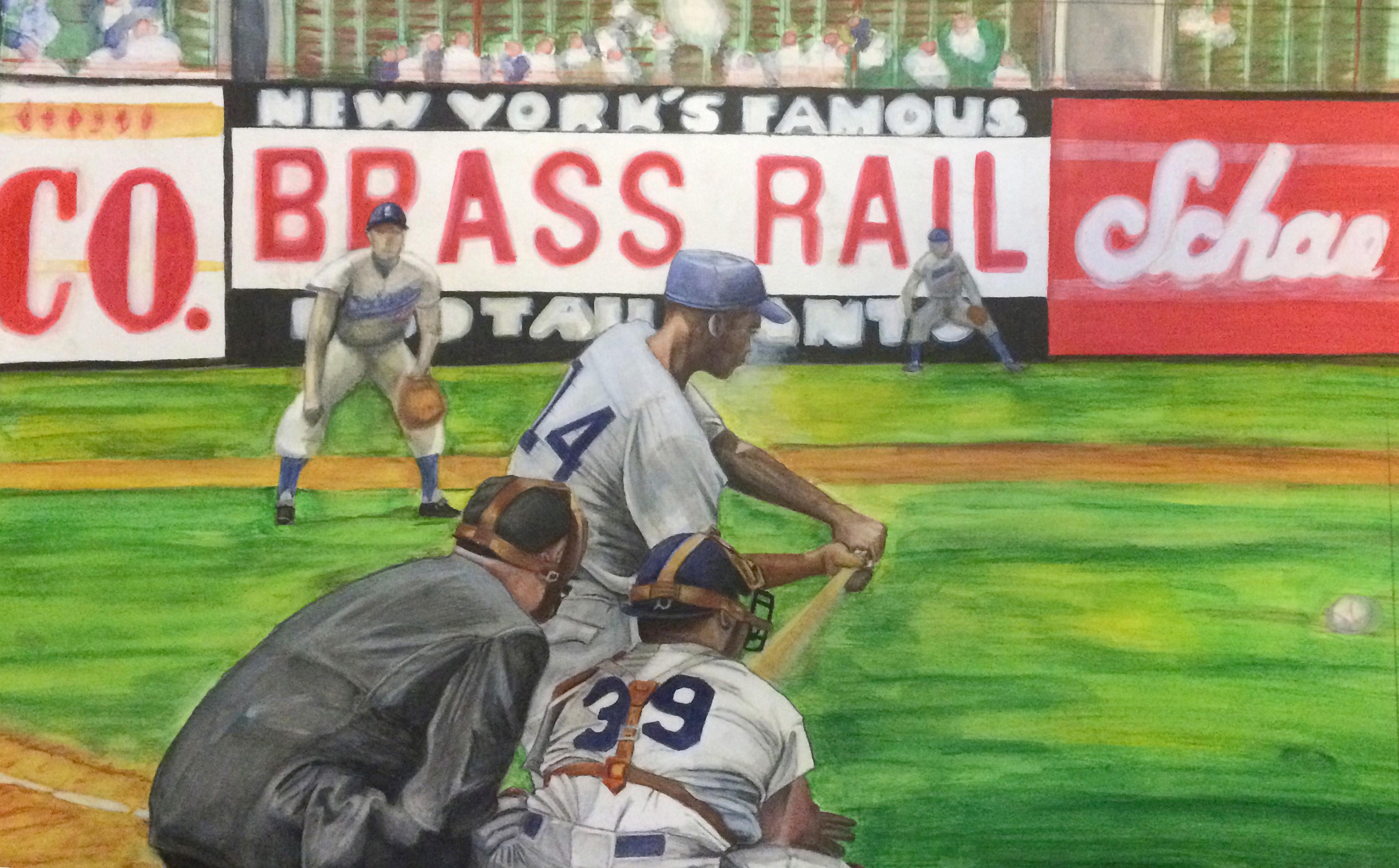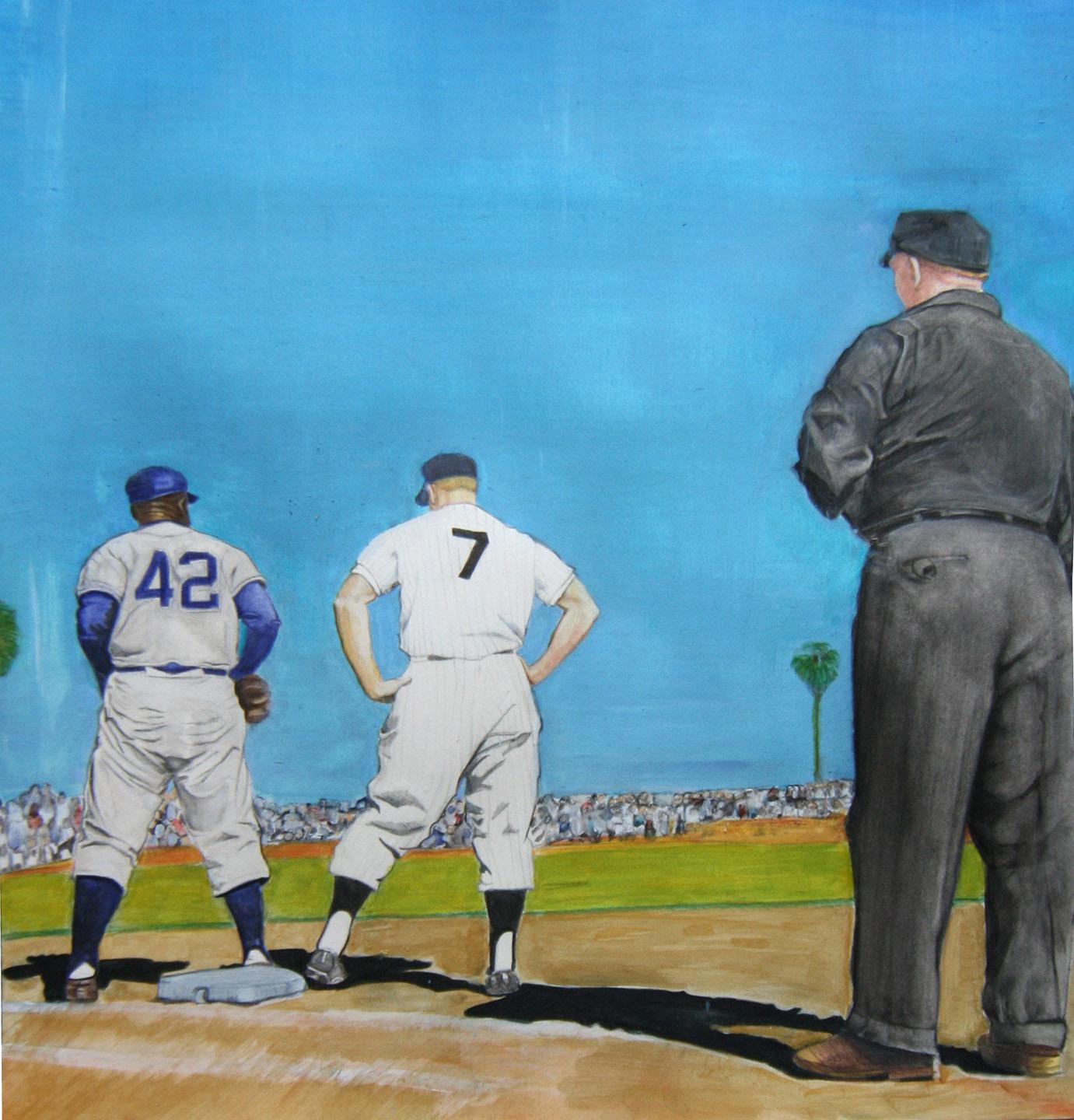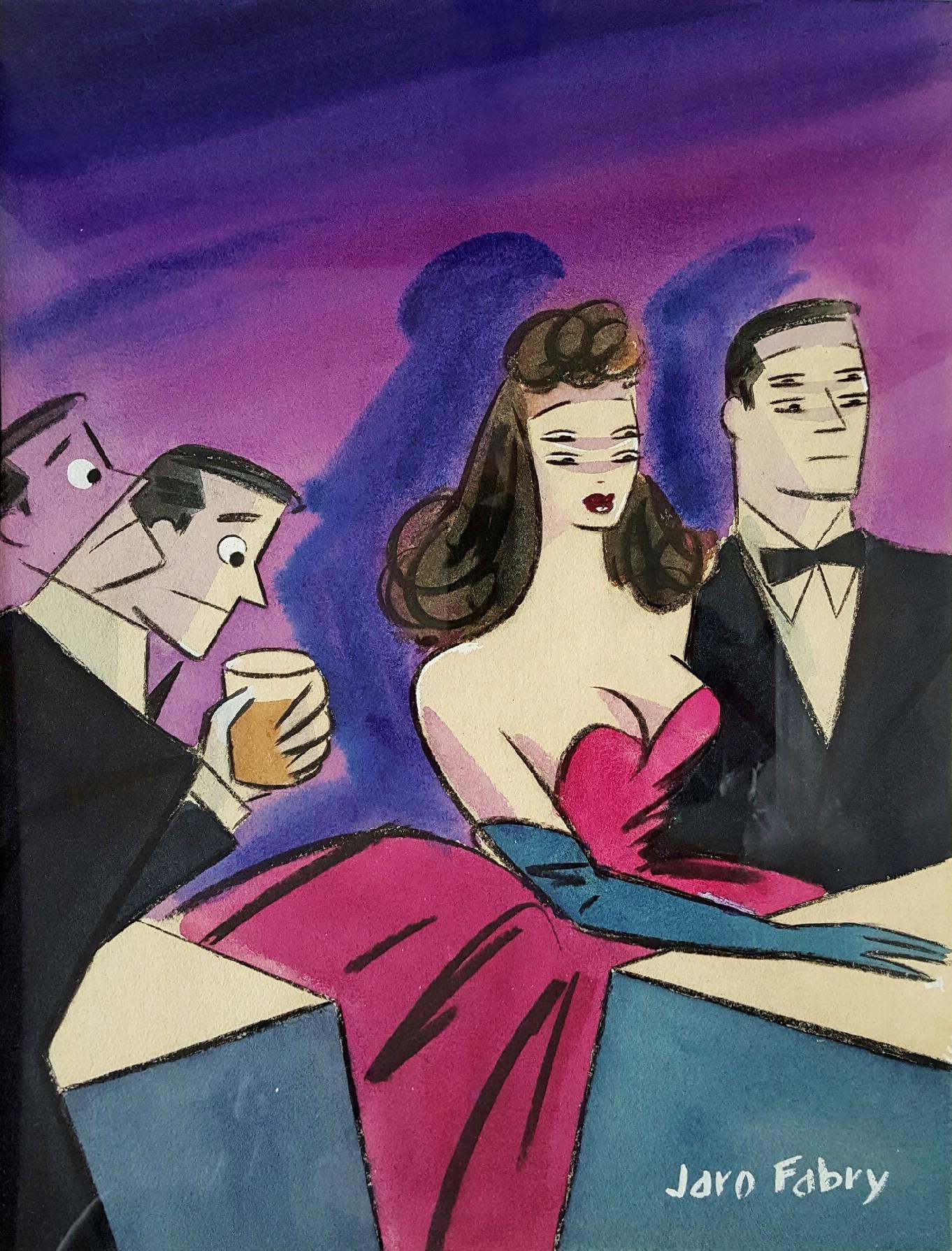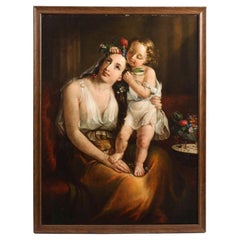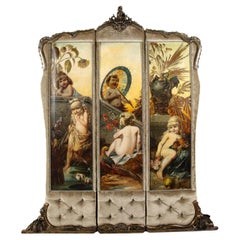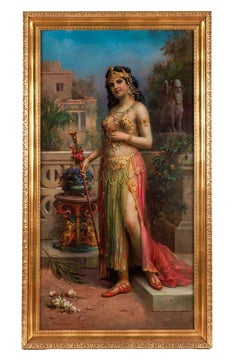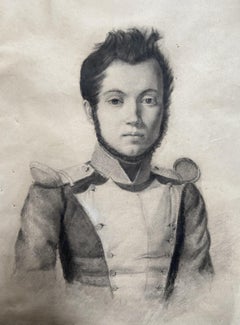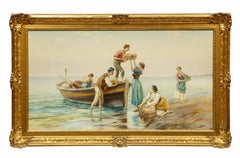
Pietro Gabrini (Italian 1856-1926) An Extremely Fine Hand-Painted Watercolor
View Similar Items
Want more images or videos?
Request additional images or videos from the seller
1 of 16
Pietro Gabrini 1Pietro Gabrini (Italian 1856-1926) An Extremely Fine Hand-Painted Watercolor
About the Item
- Creator:Pietro Gabrini 1
- Dimensions:Height: 45 in (114.3 cm)Width: 28 in (71.12 cm)Depth: 3 in (7.62 cm)
- Medium:
- Movement & Style:
- Period:
- Condition:
- Gallery Location:New York, NY
- Reference Number:1stDibs: LU115127134572
Pietro Gabrini 1
Pietro Gabrini was Guglielmo De Santis' student and made his debut in the artistic world with a historical subject Una scena dell' Inquisizione (A scene of the Inquisition). He worked both in Italy and abroad. In his early production, Gabrini used to paint mostly historical subjects: in 1892, on the occasion of the fourth centenary of the discovery of America, he won the Big gold medal of the International Exhibition in Chicago with the painting Colombo. Later, he used to paint landscapes, marine landscapes, genre and sacred paintings.
About the Seller
5.0
Vetted Seller
These experienced sellers undergo a comprehensive evaluation by our team of in-house experts.
Established in 1980
1stDibs seller since 2019
13 sales on 1stDibs
More From This SellerView All
- Lilly Martin Spencer (American, 1822-1902) A Portrait of a Mother and ChildBy Lilly Martin SpencerLocated in New York, NYLilly Martin Spencer (American, 1822-1902) A Portrait of a Mother and Child 19th Century. Oil on canvas, signed Lilly Martin Spencer was one of the most popular and American female genre painters in the mid-nineteenth century. She primarily painted domestic scenes, paintings of women and children...Category
19th Century Romantic Portrait Paintings
MaterialsOil
- Palatial and Opulent Belle Epoque Giltwood & Oil on Canvas Three-Panel ScreenLocated in New York, NYA Palatial and Opulent Belle epoque giltwood & oil on canvas three-panel screen, circa 1890. "Allegory of Youth" Comprising of three exquisite hand-painted triptych oil on canvas panels of cherubs and putti amongst a peacock, all by Ferdinand Wagner II (German, 1847-1927). Each panel depicting different playful and joyous scenes of putti and cherubs. All three-in-one panels within individually carved giltwood and upholstered frames. One panel signed at the lower left: Ferd.Wagner. A truly magnificent and one of a kind piece, perfect for any room in the home. Overall: 101" high 85" wide x 5" deep Very good condition. Ready to place. Ferdinand Wagner II (German, 1847-1927) was the son of Passau Ferdinand Wagner Senior, a teacher at a vocational art school who began training him professionally at a young age. After traveling to Italy in 1867-1868, he continued with his art studies at The Munich Academy of Arts led by Peter Von Cornelius and Julius Schnorr Von Carolsfeld. Wagner II was influenced by the Munich School of master painters and by his art teacher, Karl von Piloty, who had been teaching at the Munich Art Academy since 1856. Piloty’s approach to historical paintings was influenced by the French art academic Paul Delaroche and by the fine artworks by Rubens and the Venetians. After his return to Germany he was commissioned to decorate the former the Tenormayer Wine Tavern in Munich, subsequently he received numerous other commissions as a decorator. Ferdinand Wagner II wall paintings and ceiling frescos...Category
19th Century Romantic Figurative Paintings
MaterialsOil
- Emanuel Oberhauser (Austrian, 1854 - 1919) Full Length "Orientalist Queen" OilBy Emanuel OberhauserLocated in New York, NYEmanuel Oberhauser (Austrian, 1854 - 1919) An Exceptional quality full length oil on canvas painting of a Young Orientalist Queen / Odalisque. 19th ...Category
19th Century Portrait Paintings
MaterialsOil
- Reply of the Zaporozhian Cossacks to Sultan Mehmed IV Painting after Ilya RepinLocated in New York, NYReply of the Zaporozhian Cossacks to Sultan Mehmed IV of the Ottoman Empire, also known as Cossacks of Saporog, Are Drafting a Manifesto. Late 19...Category
Late 19th Century Figurative Paintings
MaterialsOil, Canvas
- Circle of Jean Honore Fragonard (1732–1806) A Painting of Three Putti and FireBy Jean-Honoré FragonardLocated in New York, NYCircle of Jean Honore Fragonard (French 1732–1806) An Exceptional Painting of Three Putti and Fire, circa 1795. Masterfully painted in the late ...Category
18th Century Rococo Portrait Paintings
MaterialsOil, Cotton Canvas
- A Magnificent Oil Painting "A Dainty Bit" A Woman With Lobster and GameLocated in New York, NYA Magnificent Oil Painting "A Dainty Bit" A Young Woman With Lobster and Game, by Otto Meyer (German, 1839-1868) Oil on canvas with original gilt-wood fram...Category
19th Century Figurative Paintings
MaterialsOil
You May Also Like
- French Romantic school, Portrait of a young soldier, drawingLocated in Paris, FRFrench Romantic school, circa 1830 Portrait of a young soldier, pencil on paper Framed under glass : 38 x 30 cm It's a vintage frame, probablly original but I had the back redone T...Category
1830s Romantic Portrait Drawings and Watercolors
MaterialsPencil
- Rare Modernist Hungarian Rabbi Pastel Drawing Gouache Painting Judaica Art DecoBy Hugó ScheiberLocated in Surfside, FLRabbi in the synagogue at prayer wearing tallit and tefillin. Hugó Scheiber (born 29 September 1873 in Budapest – died there 7 March 1950) was a Hungarian modernist painter. Hugo Scheiber was brought from Budapest to Vienna at the age of eight where his father worked as a sign painter for the Prater Theater. At fifteen, he returned with his family to Budapest and began working during the day to help support them and attending painting classes at the School of Design in the evening, where Henrik Papp was one of his teachers. He completed his studies in 1900. His work was at first in a post-Impressionistic style but from 1910 onward showed his increasing interest in German Expressionism and Futurism. This made it of little interest to the conservative Hungarian art establishment. However, in 1915 he met the great Italian avant-gardist Filippo Tommaso Marinetti and the two painters became close friends. Marinetti invited him to join the Futurist Movement. The uniquely modernist style that he developed was, however, closer to German Expressionism than to Futurism and eventually drifted toward an international art deco manner similar to Erté's. In 1919, he and his friend Béla Kádar held an exhibition at the Hevesy Salon in Vienna. It was a great success and at last caused the Budapest Art Museum to acquire some of Scheiber's drawings. Encouraged, Scheiber came back to live in Vienna in 1920. A turning point in Scheiber's career came a year later, when Herwarth Walden, founder of Germany's leading avant-garde periodical, Der Sturm, and of the Sturm Gallery in Berlin, became interested in Scheiber's work. Scheiber moved to Berlin in 1922, and his paintings soon appeared regularly in Walden's magazine and elsewhere. Exhibitions of his work followed in London, Rome, La Paz, and New York. Scheiber's move to Germany coincided with a significant exodus of Hungarian artists to Berlin, including Laszlo Moholy-Nagy and Sandor Bortnyik. There had been a major split in ideology among the Hungarian avant-garde. The Constructivist and leader of the Hungarian avantgarde, Lajos Kassák (painted by Hugó Scheiber in 1930) believed that art should relate to all the needs of contemporary humankind. Thus he refused to compromise the purity of his style to reflect the demands of either the ruling class or socialists and communists. The other camp believed that an artist should be a figurehead for social and political change. The fall out and factions that resulted from this politicisation resulted in most of the Hungarian avant gardists leaving Vienna for Berlin. Hungarian émigrés made up one of the largest minority groups in the German capital and the influx of their painters had a significant effect on Hungarian and international art. Another turning point of Scheiber's career came in 1926, with the New York exhibition of the Société Anonyme, organized by Katherine Dreier. Scheiber and other important avant garde artists from more than twenty-three countries were represented. In 1933, Scheiber was invited by Marinetti to participate in the great meeting of the Futurists held in Rome in late April 1933, Mostra Nazionale d’Arte Futurista where he was received with great enthusiasm. Gradually, the Hungarian artists began to return home, particularly with the rise of Nazism in Germany. Kádar went back from Berlin in about 1932 and Scheiber followed in 1934. He was then at the peak of his powers and had a special flair in depicting café and cabaret life in vivid colors, sturdily abstracted forms and spontaneous brush strokes. Scheiber depicted cosmopolitan modern life using stylized shapes and expressive colors. His preferred subjects were cabaret and street scenes, jazz musicians, flappers, and a series of self-portraits (usually with a cigar). his principal media being gouache and oil. He was a member of the prestigious New Society of Artists (KUT—Képzőművészek Új Társasága)and seems to have weathered Hungary's post–World War II transition to state-communism without difficulty. He continued to be well regarded, eventually even receiving the posthumous honor of having one of his images used for a Russian Soviet postage stamp (see image above). Hugó Scheiber died in Budapest in 1950. Paintings by Hugó Scheiber form part of permanent museum collections in Budapest (Hungarian National Museum), Pecs (Jannus Pannonius Museum), Vienna, New York, Bern and elsewhere. His work has also been shown in many important exhibitions, including: "The Nell Walden Collection," Kunsthaus Zürich (1945) "Collection of the Société Anonyme," Yale University Art Gallery, New Haven, Connecticut (1950) "Hugó Scheiber: A Commemorative Exhibition," Hungarian National Museum, Budapest (1964) "Ungarische Avantgarde," Galleria del Levante, Munich (1971) "Paris-Berlin 1900-1930," Centre Georges Pompidou, Paris (1978) "L’Art en Hongrie, 1905-1920," Musée d’Art et l’Industrie, Saint-Etienne (1980) "Ungarische Avantgarde in der Weimarer Republik," Marburg (1986) "Modernizmus," Eresz & Maklary Gallery, Budapest (2006) "Hugó Scheiber & Béla Kádár," Galerie le Minotaure, Paris and Tel Aviv (2007) Hugó Scheiber's paintings continue to be regularly sold at Sotheby's, Christie's, Gillen's Arts (London), Papillon Gallery (Los Angeles) and other auction houses. He was included in the exhibition The Art Of Modern Hungary 1931 and other exhibitions along with Vilmos Novak Aba, Count Julius Batthyany, Pal Bor, Bela Buky, Denes Csanky, Istvan Csok, Bela Czobel, Peter Di Gabor, Bela Ivanyi Grunwald, Baron Ferenc Hatvany, Lipot Herman, Odon Marffy, C. Pal Molnar...Category
Early 20th Century Modern Figurative Paintings
MaterialsPaper, Charcoal, Pastel, Watercolor, Gouache
- Set of 9 Figure Illustrations Egyptian Classical Characters Listed AmericanLocated in Cirencester, GloucestershireSet of x9 figures original watercolour painting on artist paper signed by Marjorie Schiele (1913-2008) *see notes below piece of paper is 14 x 10 inches In good condition provenance:...Category
Early 20th Century American Impressionist Figurative Paintings
MaterialsWatercolor
- Set of 9 Figure Illustrations Egyptian Classical Characters Listed AmericanLocated in Cirencester, GloucestershireSet of x 9 figures original watercolour painting on artist paper signed by Marjorie Schiele (1913-2008) *see notes below piece of paper is 14 x 10 inches In good condition provenance...Category
Early 20th Century American Impressionist Figurative Paintings
MaterialsWatercolor
- Set of 6 Figure Illustrations Egyptian Classical Characters Listed AmericanLocated in Cirencester, GloucestershireSet of x6 figures original watercolour painting on artist paper signed by Marjorie Schiele (1913-2008) *see notes below piece of paper is 14 x 10 inches In good condition provenance:...Category
Early 20th Century American Impressionist Figurative Paintings
MaterialsWatercolor
- Male Wacky Artist Portrait Swirly Moustache French PaintingLocated in Cirencester, GloucestershireFrench Expressionist Portrait by Guy Nicod (French 1923 - 2021) watercolour on artist paper, unframed painting : 19.5 x 15.5 inches provenance: artists estate, France condition: very...Category
Mid-20th Century Modern Figurative Paintings
MaterialsWatercolor
